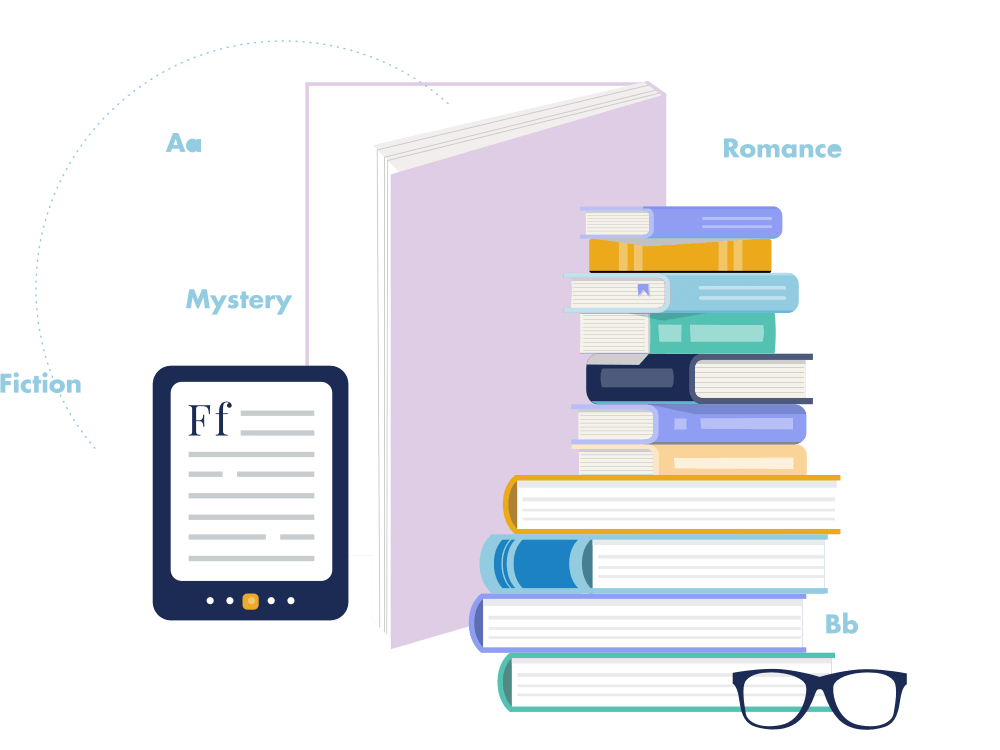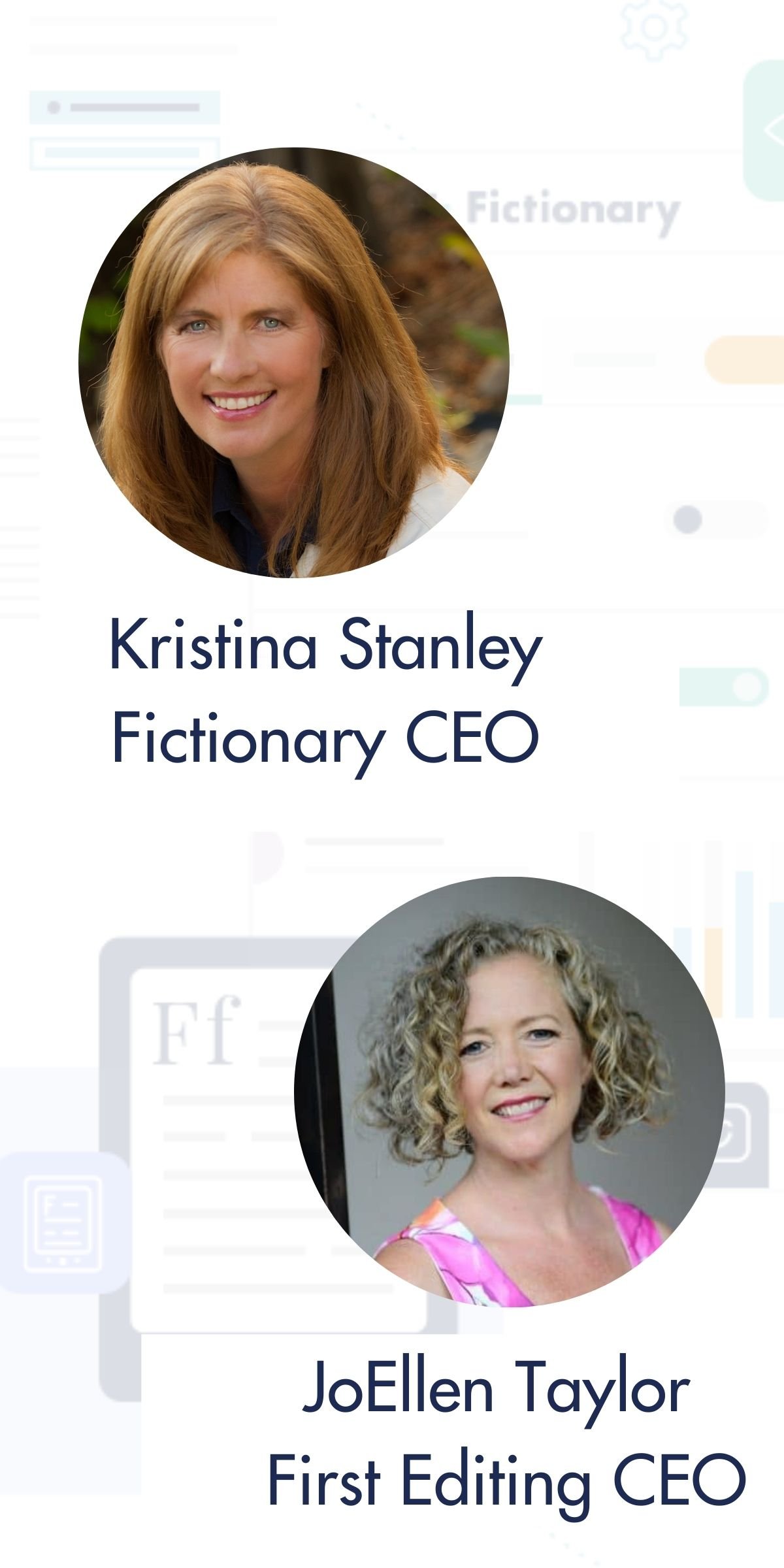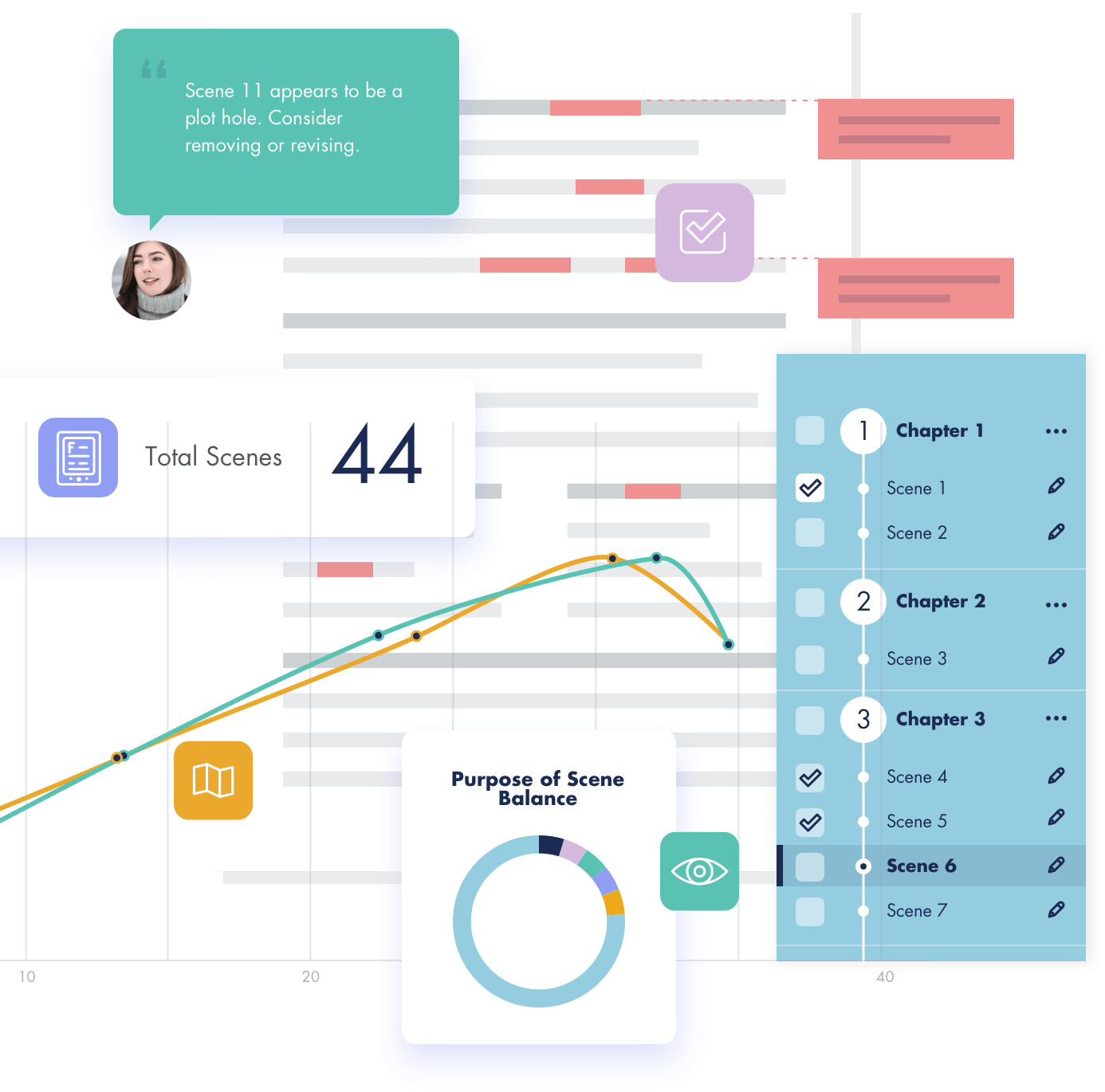
Story Element #5
POV Goal Related to Plot
In this video, we’re talking about the “Goal Related to Plot” story element. This is where the blurb you wrote about your story comes in to play. Learn how to link character goals to your intent for the story.
Next Story Element: What if the POV Character Goal Fails?
![]()
Rather read than watch?
Video Transcript
JoEllen:
My name is JoEllen and I am here this week with Kristina Stanley of Fictionary as we continue our series on the fiction editing and all of the 38 Story Elements that contribute to a great story. Thank you for joining us, Kristina.
Kristina:
Hi Joellen. It’s great to be here again this week.
JoEllen:
It’s fantastic. We’ve been covering a lot of perspectives from the point of view and the goals internally. So this week we want to talk about this goal and how it relates to the overall plot.
So can you tell us a little bit how that makes our characters more believable and what that entails?
![]()
Tips for Working on POV Goal Related to Plot
Kristina:
I certainly can. So everyone who’s been with us, if you haven’t been, we’re going through all of the characters story elements that are going to help your readers relate more to your characters. We will cover plot and settings in the future and overall structure.
So not to worry we’re getting there. So for characters we’ve done why it’s important to know your characters in every scene, who the point of view character is, what their external goal is, and what their internal goal is.
And now we’re going to talk about how either of those goals relate to the plot and linking your character goals to plot, is a way to give your characters depth.
It gives you a way when you’re revising to trim scenes, or if you’re an editor you can recommend where writer can trim scenes, and it’s going to also help intensify scenes because we can get rid of things that aren’t actually related to them.
JoEllen:
Excellent. Excellent. So we have this. We know how is the goal related to the plot. How do we use it?

![]()
How to Use this Element
Kristina:
Okay. So what you want to do is you want to go back and you want to look at the two goals that you’ve written for this scene.
And one is the external, and one is the internal, which we related to what’s the major flaw of the protagonist.
And so when you’re reviewing your scene, you know what your plot is. So you want to look at those goals and say for the external goal, is it related to your story? And what I mean by that is if I have a goal that I’m going to pick up my car at the mechanics, that’s nice. Who cares?
Nobody, not even me. I just want my car, but what if you know there’s someone out to get me, and they have somehow, at the mechanics, done something to my brakes and the reader knows this.
And so now my goal is related to the plot because I’m going to go and get my car. And all of a sudden, it’s interesting that it’s protagonist versus antagonist and there are consequences to it.
So if it’s related to the story, that’s great.
And if it’s not, it’s going to be boring to the reader. And they’re going to think it’s just an episodic thing in the story, which is never good.
JoEllen:
Hmm. No, not at all. So how do we go in and try to figure out if that’s working or not?
How do we, how if I’m working on my book today and I want to have a takeaway here, what am I going to do?
![]()
Goals
Kristina:
Okay. So you’re going to look at your overall goal. So you’ve probably written a blurb for your story. So I’ll go back to the murder mystery because it’s an easy example. It’s to solve the murder. So my external goal, as the protagonist is I’m going to solve this murder.
JoEllen:
Right.
Kristina:
My internal goal is my own personal character flaw.
So let’s say this time, I’m really nervous in crowds and I can’t speak to people and I just have a problem with that. And so my internal goal is to get over that, so I can get out and investigate and until I can get out and investigate, I can’t solve this murder.
So there’s my two goals.

The Hook
Kristina:
So now when I look at my scenes, I want to review and look at,
- I know my overall plot from my blurb, you know, my two or three sentences that describes what a reader thinks the book is about.
- And when you have a goal, can you link it to that blurb? If you can’t link it to the blurb, it’s probably not related to your story.
JoEllen:
True. So today we get to look at our blurb and see if it really, really hooks in.
And again, that’s the hardest part, because those are so short, it’s, you know, your little elevator speech, and you’ve got to make sure it works.
So that’s a tough one, but well worth doing, because it’s best to do it upfront and early in the game. Then later when you’re ready to distribute this or put it out there for self publishing.
So again, thank you. That’s fantastic. So our goals related to the plot.
Kristina:
Yeah. So, okay. Everybody has their action item for this week. It’s to look at your scenes and it will get easier when you do your first one. And your second one, you’re going to struggle a little bit, but then as you get rolling through your story, you’ll see it.
JoEllen:
Perfect. Thank you so much for joining us again this week. And we look forward to talking to you next week, about 38 elements of fiction editing.


